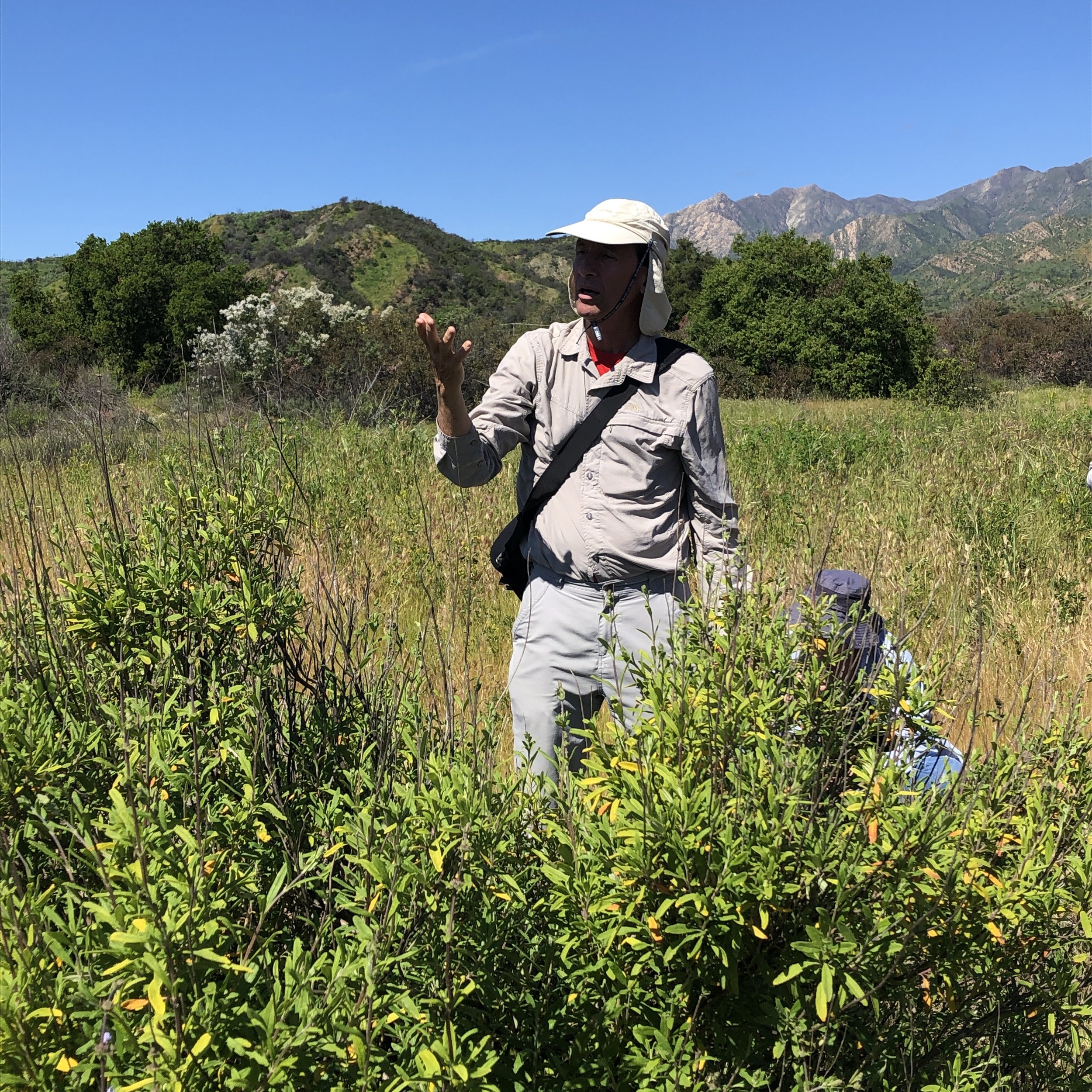Elderberry flowers.
If academic learning is a ladder, then post-academic, lifelong learning is more like scaffolding. Building on existing knowledge, the opportunity to branch out in new directions multiplies as needs, interests, and passions change.
Integration is a key component of my current state of learning—now that I have a PhD, how can I integrate my education and ecological understanding into something both more applied and more wholistic? In other words, besides my ongoing fieldwork and academic research, what else is ecology good for, and how can it assist my contribution to, and citizenry in, the greater global community?
Bush poppy.
As in a gap analysis, I’ve been looking for my blind spots—places that my understanding of the natural world is more shallow, which naturally happens when forming an academic specialization—breadth is sacrificed for depth.
Jim Adams.
Having focused almost exclusively on wildlife for most of my career, one of the larger gaps in my understanding has been with native flora. As a practitioner of natural history mentored by one of southern California’s greatest natural historians, I know my way around the most common trees, shrubs, and wildflowers; and that is the breadth. The depth comes with wanting to understand how these plants relate to each other, what role they play in the ecosystem, how Native Americans use and have used them for food and medicine for millennia, and how we might be able to eat them or use them as medicines today.
Field notes.
So this weekend I attended a native medicinal plant workshop with local naturalist and herbal expert Lanny Kaufer and Chumash healer/USC pharmacologist James Adams. In the Ojai Valley Land Conservancy’s Ventura River Preserve, we learned about plants that have bioterprnoids to heal chronic pain and how to prepare them, how to make soap from Ceanothus flowers, and which plant can alleviate pneumonia and tuberculosis and asthma when it is boiled and the steam inhaled.
White sage.
Dr. Adams shared with us the three genocides committed against Native Americans in California at the hands of the miners, missionaries, and Californians that voted to exterminate them. He said that as Californians it is our responsibility to repent and make reparations for the crimes committed against the indigenous people of California; at which point a participant exclaimed, “Why repent?! You didn’t do all those things!” And Dr. Adams reminded us that we benefit from white privilege, brought to us through the atrocities committed against Native Americans and many others, and therefore it is our responsibility to do what we can to make it right: for starters, to stop pretending that it didn’t happen; to talk about it and teach about it, and to be honest with ourselves about what it means. Indeed, we are reminded that the excuse of “I didn’t do it” has been long used as a way to perpetuate inequality borne of decades and centuries of ignorance and violence.
When our teachers picked a small part of a plant to give a demonstration, they said a prayer and made an offering to the land, to nature, and to the subtle. We can look at nature from an ecological perspective, from an historical perspective, from a utilitarian perspective, and from a cultural perspective. Blurring the lines between them provides an opportunity for deeper levels of understanding and integration.
Despite the dark corners of California’s human history, today the glorious, tragically brief spring in the Ojai Valley celebrates the end of a long, rainy winter with shrubs and trees plump with new growth in every shade of green, the landscape decorated with flowers in all colors—from lemon-yellow bush poppy to hot-pink owl’s clover; reminding us that each spring, each week, each day, each hour is an opportunity to learn, to grow, to do a little better.




